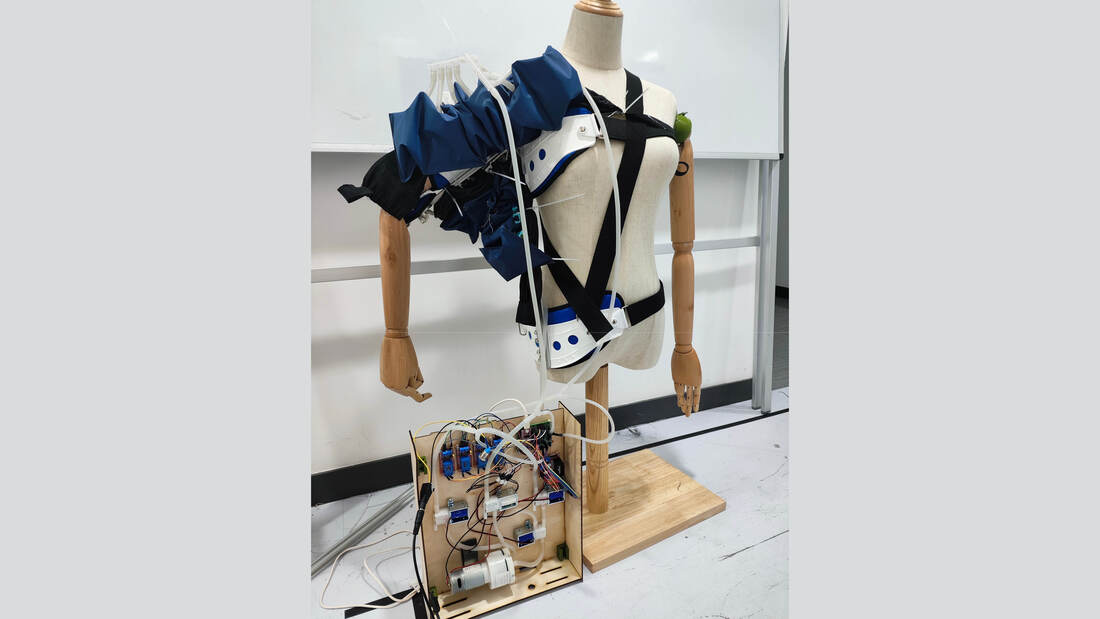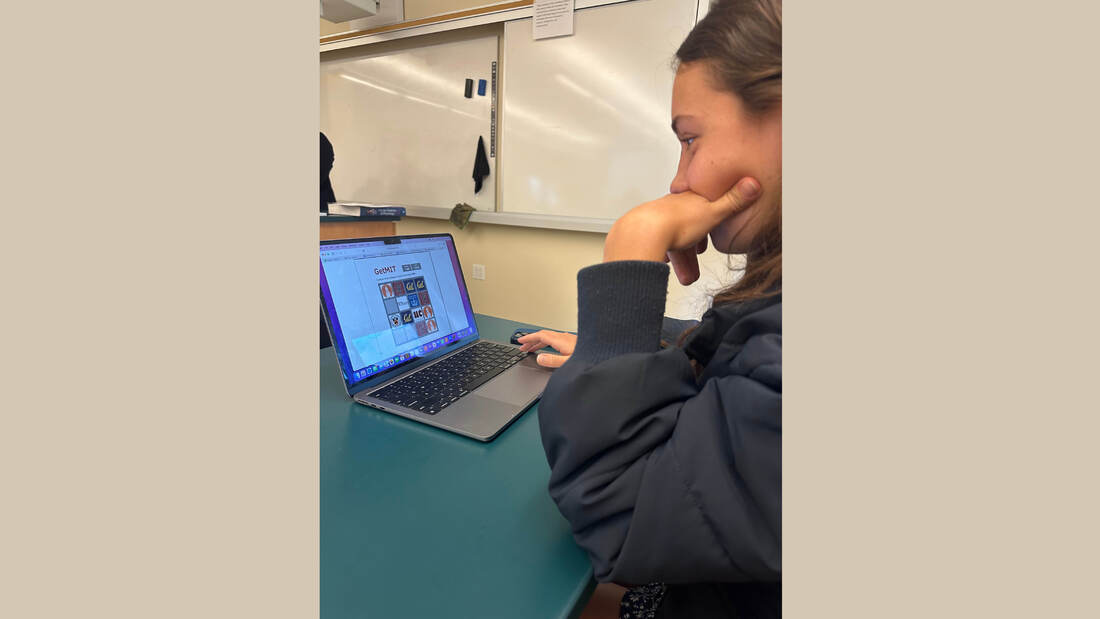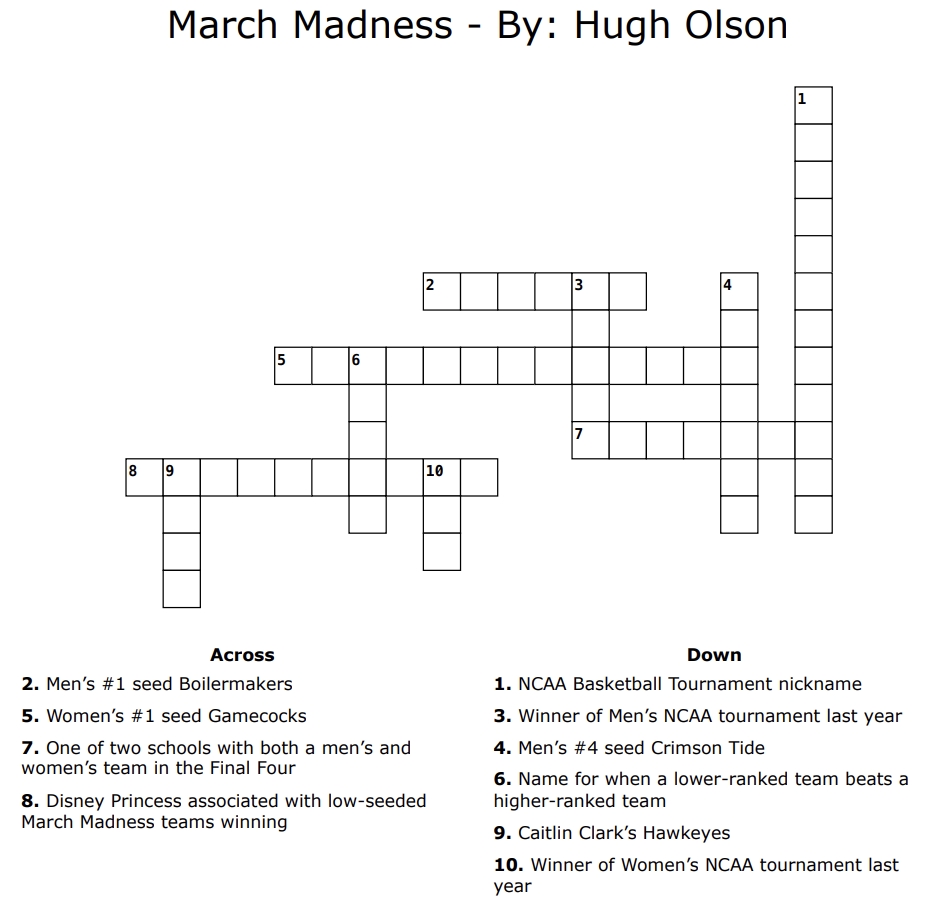By Simon Stambaugh ’26At first glance, “Professional Wrestling” is a scripted show following half-naked men and women wrestling each other, climbing the ranks, and becoming champions; however, it’s not that simple. When focusing on a simple episode of Monday Night Raw or Friday Night Smackdown, you begin to see WWE’s plan for each character, how it builds stories much more than just wrestling that are both engaging and fun to watch and which ultimately climaxes with a thrilling fight in the ring. WWE characters often begin with an idea, what is he going to act like, what is his gimmick? A gimmick in wrestling is the wrestler's persona in the ring and during promos. John Cena’s gimmick is being the hero whose motto is “hustle, loyalty, and respect.”
This gimmick is usually used in contrast to a bad guy like late 90’s Rock who was just a guy who made fun of people and called them jabronis. Characters can alternate depending on different stories, the key to wrestling entertainment. WWE stories, while simple by nature, often unfold into something beautiful by the end. One of the biggest stories was John Cena vs. The Rock. Both wrestlers took shots at what they wore and their personalities. These promos and the fans they carried initially sparked interest, but it continued through the promos, hooking up the match and building more tension. This was all designed to receive the most amount of emotional investment out of a fan. All of this led to the match where these two faced off and resulted in a loss for Cena and the beginning of a rivalry in which John Cena would come to beat The Rock in a separate match a year later. The script in these matches invokes emotion and tension, always leaving fans wanting more and paying it off with a big win. WWE’s characters, storytelling capabilities, and matches diversify the activity from not just wrestling but theater as well.
0 Comments
By Aniela Apteker ’24Bank failures are defined by insolvency — when a bank doesn't have enough liquidity to return customer deposits in cash. Since the establishment of the Federal Deposit Insurance Corporation (FDIC), a government agency that protects customers' deposits, there have been 3,516 bank failures in the US. However, the most stunning failure occurred within two days in March of 2023 at the beloved Silicon Valley Bank.
The Silicon Valley Bank, most commonly referred to as SVB, was heavily impacted by its failure to diversify its investment portfolio, which, in turn, constitutes a solid concentration of companies from the same industry. When inflation rose, and the tech companies struggled to gain support from venture capitalists, it hit the bank all at once. So, when one company in an industry decides to withdraw its deposit, it is likely that others will quickly follow in their footsteps and "run" to the bank to withdraw before the bank has used up its liquidity. However, like other banks, SVB only had a limited amount of cash readily available while the rest was invested. To compensate for its lack of liquidity, the bank chose to sell its bonds at a loss to generate more cash, incurring a considerable loss quickly. The SVB needed more liquidity to allow all its customers to withdraw and protect their deposits, and it needed to prepare and be capable of handling this situation, given the overwhelming number of companies in the same industry. As The New York Times describes, the essential question behind the government's intervention strategy was: "Could the failure of Silicon Valley Bank, the mega start-up lender that had just collapsed, spread to other banks and create a systemic risk to the financial system?" The legitimacy of this question was supported by the influx of bank runs across the country, risking a potential domino effect of insolvency. In the days after SVB was shut down, debates contemplated the limits of the government's rescue and the possible impact on the economy and banks nationwide. Ultimately, the Treasury, the White House, and the Federal Reserve Bank announced that all depositors would be fully repaid, and the Federal Reserve would "offer a program providing attractive loans to other financial institutions in hopes of avoiding a cascading series of bank failures." Of course, like all else, these decisions had boundaries set to ensure that the government didn't come to the rescue prematurely or excessively. While the Federal Reserve promised to pay back depositors in whole, surpassing the initial guarantee of $250,000, investors who owned stock in the SVB Financial Group were more susceptible to losing money as their investments were unsecured. I agree with the governmental institutions' varying responses to the SVB's failure. By not tapping into taxpayers' money to pay back depositors and instead using funds from the Federal Reserve, the government was able to instill some security and peace of mind for citizens nationally – also restraining the bank's failure from becoming more of a national unrest than it already was. In addition, the guarantee of deposits being paid back entirely was a necessary step in preventing the domino effect of bank runs nationwide; it also, in some capacity, protects the legitimacy of the industry and banks that work closely with Silicon Valley companies. While it's true that despite all the government did to prevent the nation from going haywire and to pay back original depositors, many investors who held unsecured shares were at risk of losing money. But, with all else, I think that to ethically consider the government's cap on intervening, it must be acknowledged that investments in themselves are risks, and one of the risks investors should be wary of — despite its rarity — is bank failure. As The New York Times describes, the SVB failure was caused by the influx of bank runs, which quickly caused the bank to become insolvent. Claiming that "banking is an enterprise that relies as much on confidence as on cash – and if that runs out, the game is over." SVB lacked efficiently executed risk management and regulatory oversight, both of which heavily contributed to the bank's rapid downfall. As mentioned, I believe that the government's steps in securing repayment without relying on taxpayer money and in working towards creating educational programs to prevent bank failures are the backbone to successfully de-escalating a possibly more significant issue. Works Cited: Sorkin, A. R., Mattu, R., Warner, B., Kessler, S., Merced, M. J. D. L., Hirsch, L., & Livni, E. “Why did Silicon Valley Bank collapse?” The New York Times, March 11, 2023. Accessed April 4, 2024. https://www.nytimes.com/2023/03/11/business/dealbook/silicon-valley-bank-collapse.html “The Silicon Valley Bank collapse explained.” UW School of Law, March 24, 2023. Accessed April 4, 2024. https://www.law.uw.edu/news-events/news/2023/svb-collapse Rappeport, Alan., Hirsch, Lauren., Smialek, Jeanna., Tankersley, Jim. “How Washington Decided to Rescue Silicon Valley Bank’s Depositors”. The New York Times, March 14, 2023. Accessed April 4, 2024. https://www.nytimes.com/2023/03/14/us/politics/inside-silicon-valley-bank-rescue.html Gobler, Erin. “What Happened to Silicon Valley Bank?” Investopedia, February 27, 2024. Accessed April 4, 2024. https://www.investopedia.com/what-happened-to-silicon-valley-bank-7368676#:~:text=The%20Federal%20Reserve%20took%20steps,addition%20to%20certain%20other%20assets By Meiyin Ren ’25On March 16, Westminster School clinched top honors at the finalist awards ceremony of the Connecticut Science & Engineering Fair (CSEF). With guidance from Mrs. Bailey and Mrs. Rogers, my project, "A 2-DOF Pneumatic Shoulder Rehabilitation Device Based on Flexible Materials," was named the top winner in the Physical Sciences division and also earned a Zepke Award for its innovative application of electronic circuitry.
Inspired by my personal experience undergoing physical therapy, as well as witnessing teammates and coaches undergoing extensive shoulder rehabilitation after surgeries, I developed a novel pneumatic shoulder rehabilitation device that works to facilitate a dual range of rehabilitation exercises. Controlling the inflation and deflation of air by an air pump monitored by a pressure sensor, and featuring an assembly of three spines with seven air modules each, the device enables a dual degree of freedom (2DOF) range of movement. Currently, the device is designed to perform two basic rehabilitation exercises: vertical abduction and adduction, as well as horizontal extension and flexion, with a quantitative benchmark of a horizontal movement range of 90° and a vertical one of 45°. My research mainly focuses on examining the fabrication of the individual air modules, developing a mobile interface that enables control of the device, and testing the 2DOF range of motion of the device. Since my device achieved a commendable vertical range of 56.4° and a horizontal range of 109.2°, it is able to meet rehabilitation needs. This victory at CSEF allowed me to secure one of the seven spots to represent Connecticut at the International Science and Engineering Fair (ISEF) in Los Angeles this May, where we will compete with other national teams. Furthermore, I received an invitation to the 49th Annual Meeting and Dinner of the Connecticut Academy of Science and Engineering, where I will display my project for Academy Members and guests. However, this victory was not just a personal achievement but a historic moment for Westminster, marking the first time in recent years the school has received top honors at the fair. The last notable participant was Jiwoong Park ’21, who won a Zepke Award. By Camilla Norton ’25Helen Marshall ’25 strategically determining her next move to secure MIT. It's a feat to get into MIT, but so is GETting MIT.
GET MIT, a new version of the game 2048 played with colleges instead of numbers, has undoubtedly taken this campus by storm. It's played on a plain 4x4 grid with tiles marked by various college logos that slide when players use the four arrow keys. The game initially starts with two CalTech tiles already on the grid, with another such tile appearing in a random empty space whenever an arrow key is pressed. The tiles that appear range from West Coast to East Coast schools, with the final goal being to achieve the furthest East Coast school, MIT. It takes, on average, 938 moves to win, with the trick being to always keep the furthest East Coast college in the corner. This simple game takes the perfect combination of stamina and patience. Now the question is, what makes this simple game so enticing and exhilarating for students? Several Martlets were interviewed, and these were their responses: Helen Marshall ’25 said: “I play because I need to finish the game. It's one of those things where you can't give up and have to play until you win. I actually don't like playing, but I won't give up until I win.” Juliette Smatt ’25 said: “It makes me feel like I'm successful. It's the perfect way to take my mind off of stressful parts of my day.” Chip Genung ’25 said: “I like playing GET MIT because it's relaxing and doesn't require a lot of thought. It's much more enjoyable than 2048 because the end goal feels so much more rewarding.” Maddie Clark ’25, a three-time MIT achiever, said: “It just centers my emotions. It makes me feel this level of calmness that I can’t achieve any other way. I’d describe it as a sense of stability – a way to control the controllable.” So there you have it — playing this game is a cure for stress while simultaneously a source of insanity. It's fun to play, but once you start, it's hard to stop, until you've won. If you don’t believe me, try playing it and see if you can GET MIT. By Lexie Willis ’26I see you now,
but it’s different. I’m unable to pinpoint, when I lost you, when you started to forget. The lines etched in your face, how did you used to smile? Your head full of grays, what color was your hair? Your life was vivid, how has it changed? The color leached from your life, to have spent a lifetime learning, loving, living, for you to stare at a picture and not recognize your family . I watch as you look at us. As you look through the album, a line of people you love. Do you remember loving them? A glimmer of recognition, you smile familiarly. I sit now. I hold your hesitant hand. Do you remember my name? By Cindion Huang ’25In a quiet study overlooking
the umber leaves of fall, a tiny ant appeared on a vast, amber table of knowledge where books pile tall. Unannounced — like ants often do -- it crawls along the surface of the yellow and brown veins of wood, like a tiny sailboat, silently stood on the waves of the Pacific. How much force of the universe does it take for an ant to incessantly crawl down what seems like a meaningless trail? I watched as it maneuvers its thin, nearly nonexistent legs, step by step, to the edge of the table, the other side. Step by step, I think of mankind: our modernized humanity, a world where we, like the ants, ceaselessly, helplessly crawl towards the end of our lives, the constant days and nights -- the other side. I poured my gaze, again, onto the vast, amber table of knowledge, only to find that the ant has quietly vanished — like ants often do -- a sunken sailboat amidst an endless blue. By James Teng ’26Oh the tender souls that fell,
The loss of the pet is commemorated by all, My girl's sparrow, cherished, in her heart, Now gone from us and living in the dark. It was not just a bird But a part of the family, as the third. She knew its every chirp, its every move, A bond so deep, no words could ever prove. No more hopping around her lap, No more singing along with its joyful flap. It took the path where no return could be made, To the deep shadows as it fades. The shades that swallow beauty's grace, Taking from us, the beloved face. Oh cruel fate, oh my dear sparrow, Your sound and existence still echo Even below. Now, in her eyes, which once had light, Swollen and red, they are no longer bright. Oh mourn with me, for this loss we share, A bond of love, beyond compare. By Carolyn Cheng ’24 Light blinds the boy
playing in a forbidden field where the grass stabs his legs he moves his hands to his face. The drone sputters the line interrupted, somewhere, a swan dies. Boy heart rattles out of time, he does not see twisted neck broken bodied in the lake. Decembered leaves hang from the trees, speaking the poppies into bloom, the boy picks one for each eye. Prying open yellowed breeze, his open field is always warm water invisibled, mouth squeezed dry. The wasps have left us for sweeter bodies. Hallelu- By Sabrina Yang ’26A perfect plan sketched inside her mind
Who to meet Who to protect Who to kill before they become a threat Every route and every movement Every world and every relationship All clear to her The future seer The one who distrusts Blood covered his hands as a body lay Motionless to the eye Cold to the touch The smile creeping through his features A job well done A beautiful distraction masking his family’s escape The cold-blooded The one who protects A shifting shadow taking shape Hundreds of faces Thousands of emotions Uncountable identities hidden behind the curtain Creative destruction Tactical manipulation One final reachable goal accomplished Fearless when demanded a sacrifice The one who controls When God bows before them in fear When the world prays for their success When they question the heavenly principles When the ground cracks and sky shatters When they finally realize they were all Liars |
Photos from Verde River, Manu_H, focusonmore.com, Brett Spangler, Cloud Income



